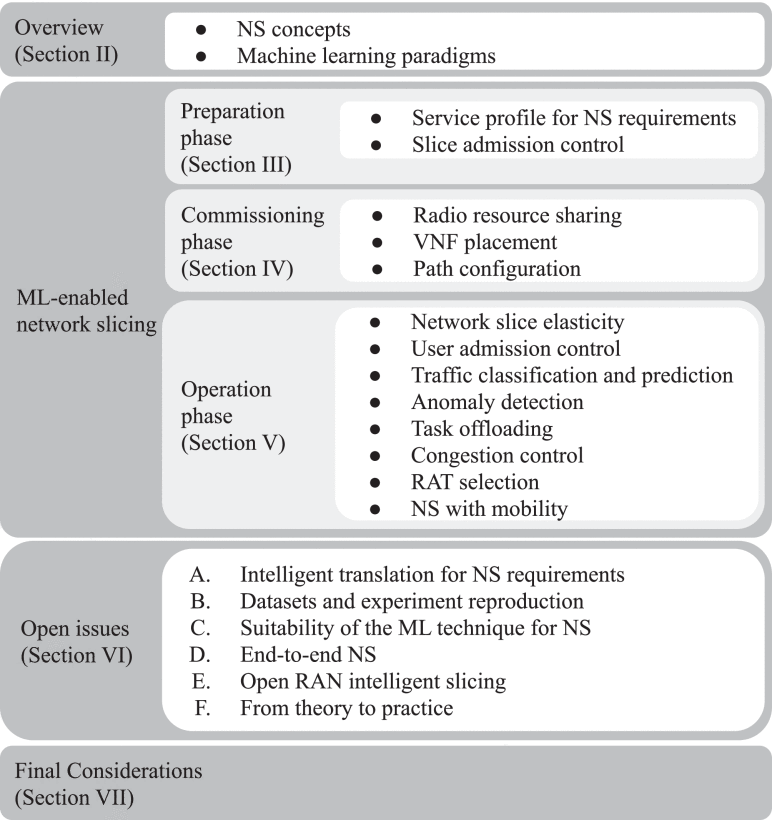Fevereiro, 2024
A. Donatti et al., “Survey on Machine Learning-Enabled Network Slicing: Covering the Entire Life Cycle,” in IEEE Transactions on Network and Service Management, vol. 21, no. 1, pp. 994-1011, Feb. 2024, doi: 10.1109/TNSM.2023.3287651.

Abstract
Network slicing (NS) is becoming an essential element of service management and orchestration in communication networks, starting from mobile cellular networks and extending to a global initiative. NS can reshape the deployment and operation of traditional services, support the introduction of new ones, vastly advance how resource allocation performs in networks, and notably change the user experience. Most of these promises still need to reach the real world, but they have already demonstrated their capabilities in many experimental infrastructures. However, complexity, scale, and dynamism are pressuring for a Machine Learning (ML)-enabled NS approach in which autonomy and efficiency are critical features. This trend is relatively new but growing fast and attracting much attention. This article surveys Artificial Intelligence-enabled NS and its potential use in current and future infrastructures. We have covered state-of-the-art ML-enabled NS for all network segments and organized the literature according to the phases of the NS life cycle. We also discuss challenges and opportunities in research on this topic.
Authors
Adnei Donatti, Department of Computer Engineering and Digital Systems, University of São Paulo, São Paulo, Brazil
Sand L. Corrêa, Institute of Informatics, Federal University of Goiás, Goiânia, Brazil
Joberto S. B. Martins, Computer Science Department, Salvador University, Salvador, Brazil
Antonio J. G. Abelem, Computer Science Department, Federal University of Pará, Belém, Brazil
Cristiano Bonato Both, PPGCA, UNISINOS, São Leopoldo, Brazil
Flávio de Oliveira Silva, Faculty of Computing, Federal University of Uberlândia, Uberlândia, Brazil
José A. Suruagy, Informatics Center, Federal University of Pernambuco, Recife, Brazil
Rafael Pasquini, Faculty of Computing, Federal University of Uberlândia, Uberlândia, Brazil
Rodrigo Moreira, Institute of Exact and Technological Sciences, Federal University of Viçosa, Viçosa, Brazil
Kleber V. Cardoso, Institute of Informatics, Federal University of Goiás, Goiânia, Brazil
Tereza C. Carvalho, Department of Computer Engineering and Digital Systems, University of São Paulo, São Paulo, Brazil

Comentários desativados